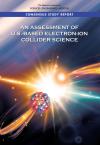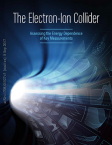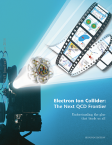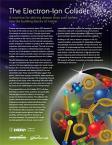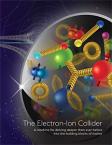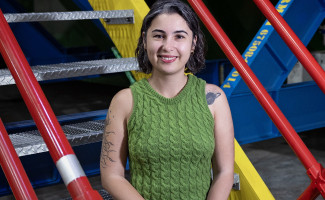Postdoctoral research associate builds on paradigm-shifting experiments
Burcu Duran is no stranger to the U.S. Department of Energy’s Thomas Jefferson National Accelerator Facility. She conducted research at the lab as a Temple University graduate student while working toward her Ph.D. in nuclear physics. Now, Ph.D. in-hand, she is continuing her research at Jefferson Lab as a postdoctoral researcher affiliated with the University of Tennessee.
The postdoctoral researcher position was especially attractive to Duran, because it puts her back in the same hall that she worked in for her Ph.D. thesis experiment: Experimental Hall C.
“The UT research group I currently work with was involved in two experiments that ran in Hall C between September and February 2023. The experiments are x>1 and EMC effect, together dubbed as ‘XEM2.’ When the experiments are running, it’s always helpful to be on-site to monitor the progress and potential issues, so that you can take necessary action in a timely manner,” she said.
The postdoctoral position also allowed Duran to take on more responsibility. For instance, she served as a run coordinator for assigned periods during the XEM2 run.
“With this role, you define the data quality appropriate for the goals of each shift and track the progress of the experiments. You also coordinate and communicate the daily operation of the experiments with several people,” she explained.
Getting started on the research path
As a graduate student working toward her Ph.D., Duran collaborated on an experiment (J/psi-007) largely motivated by an announcement of the sighting of an elusive pentaquark less than a decade earlier by a team at CERN, the European Organization for Nuclear Research. A pentaquark is a particle that is made of five quarks.
“We ran the experiment in response to a discovery by the LHCb collaboration in 2015.
“The pentaquark announcement increased interest in additional lines of inquiry around pentaquarks and was the main motivation for my thesis experiment,” Duran said. “We knew pentaquarks could exist theoretically, but until the LHCb collaboration announcement, none of the previous pentaquark candidates were unambiguously confirmed nor reproduced with better statistics, and all of them turned out to be spurious.”
She explains that her thesis experiment has already gone beyond the topic of pentaquarks. For instance, it can provide nuclear physicists with important information about the origins of the proton’s mass.
“One of the fundamental questions that we are still trying to answer today is about how the mass of the proton arises. In this experiment, we measured the J/psi photoproduction cross section to search for the LHCb’s pentaquarks, but a separate analysis using this data yielded results on proton mass radius,” she said. Duran was the lead author in a research paper that featured these results and that was published in Nature in 2023.
Scientific discoveries may rewrite what we think we know—fundamentally
Duran is fascinated by both the breadth and depth of research in nuclear physics.
“Broadly speaking, our field of physics basically studies the structure and interactions of the fundamental building blocks of matter,” Duran summarized. “What are these fundamental building blocks? We had a completely different idea about this in the past. We actually thought the protons and neutrons (called nucleons) were elementary particles with no internal structure—like an electron. We now know this is not true–protons and neutrons actually do have an internal structure. In 1964, the quark model first postulated that protons and neutrons are made of something even smaller called quarks and gluons.”
Appreciating that potentially historic discoveries happen at leading research facilities, Duran is invested in having maximum impact during her role at the lab.
“Most of what we know about nuclei today came from these experiments like what we do at Jefferson Lab,” she said. “In our effort to understand the fundamental nature of matter, and as a result of experiments like the ones we do at the lab, we know more than our predecessors about matter.”
Currently, the scientific community agrees that quarks are the smallest elementary particles.
“There have been many scattering experiments that look into this structure of atoms, and our current understanding is that quarks are the building blocks of atoms,” Duran laughed. “I’m not super-confident to say if we could find more elementary particles than quarks in the future but I don’t foresee learning about it with our current experimental setups.”
Motivated to continue learning
When not at the lab, Duran keeps herself busy with hands-on activities, including knitting and cooking.
“I enjoy knitting my own garments,” she says. “Honestly, the reason I started knitting a year-and-a-half ago was that I wanted to be more patient, in general. Knitting requires a lot of patience, and sometimes it’s hard to distinguish whether it relaxes me or drives me crazy.”
Once Duran’s postdoctoral assignment is complete, she plans to continue her research. She hopes that her current role at the University of Tennessee will help her establish a career at a university where she can not only pursue her own research, but also help to educate and inspire the next generation of scientists.
“I am exploring faculty positions, as I’m interested in doing research and teaching at the same time,” she said. “I know that it’s not an easy job, but I’m interested in working at a university.”
By Carrie Rogers





